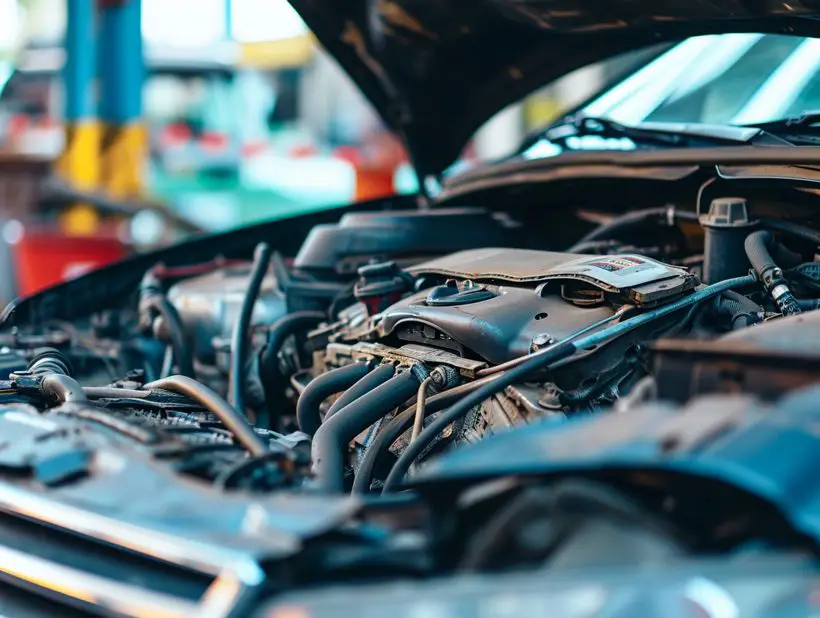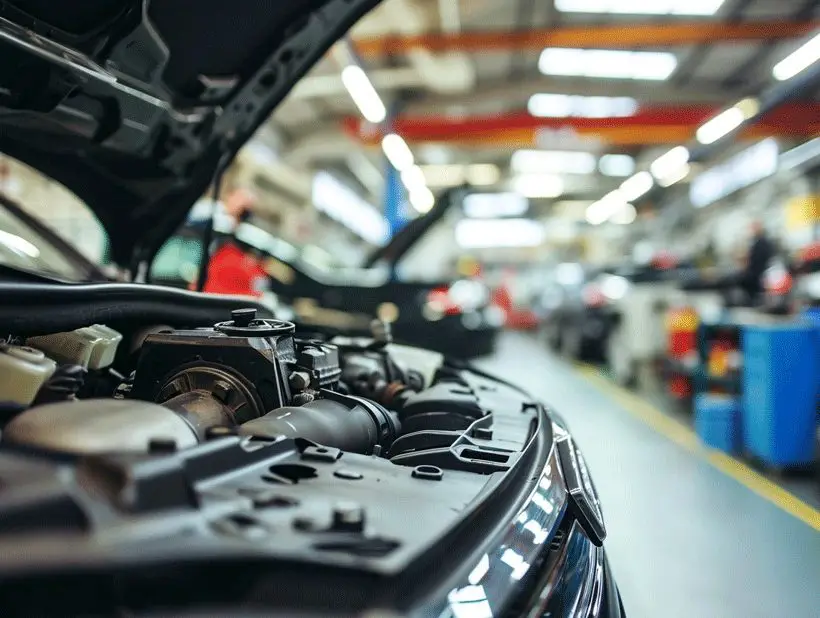Discovering a vacuum leak in your vehicle can be like finding a needle in a haystack. But fear not, I’ve got the insider tips to make this daunting task a breeze. A vacuum leak can cause all sorts of engine troubles, from rough idling to poor fuel efficiency, and I’m here to guide you through the detective work.
Why Are Vacuum Leaks Problematic?
As a devoted car owner, I’ve come to realize that a vacuum leak can be more than just an irritating hiss under the hood; it’s often the root of various engine issues that can lead to larger problems if left unchecked. When there’s a leak, the air-to-fuel ratio becomes disrupted, which affects your engine’s performance and causes the vehicle to run inefficiently.

Here’s what happens:
- The engine’s idle can become irregular, leading to a rough or greatly fluctuating idle speed.
- There may be a noticeable drop in fuel efficiency because the engine compensates for the leak by using more fuel.
- It might lead to stalling, especially when the car comes to a stop, due to the imbalance in the air and fuel mixture.
Another critical concern is the engine potentially running too lean due to excess air being drawn into the combustion process. This condition can result in overheating and eventually cause damage to the engine components such as valves or pistons.
Moreover, modern vehicles rely heavily on computers to manage engine performance. A vacuum leak can throw off these calculations, causing the check engine light to activate. Diagnostic trouble codes related to the mass airflow sensor or oxygen sensors might be triggered, making the problem less straightforward to diagnose.
When considering emissions, a vacuum leak may lead to an increase in harmful emissions. Cars are designed to maintain a specific balance of gases to minimize pollution, but a leak can cause the release of more pollutants than the norm.
It’s also worth mentioning that the longer a vacuum leak goes unrepaired, the more opportunity there is for dirt and debris to enter the engine, potentially leading to contamination of the oil and other critical components. By understanding how vacuum leaks affect your vehicle, you’re better equipped to spot the signs and take immediate action. Let’s move on and discuss how detecting a vacuum leak can be approached with a methodical and thorough strategy.
Signs of a Vacuum Leak

When I suspect a vacuum leak in my vehicle, I keep an eye out for several telltale symptoms. Knowing these signs helps me catch issues before they worsen. Here’s what I look out for:
Idling Issues can be a dead giveaway. If my car’s engine idles at a higher rpm than usual or if it seems to fluctuate erratically, I consider the possibility of a vacuum leak. This is because the leak can allow extra air to mix with the fuel, disrupting the air to fuel ratio.
A Hissing Sound often leads me right to a vacuum leak. It’s the sound of air escaping from the engine area, and it’s most noticeable when the engine is running, but the vehicle is stationary. I’ll usually pop the hood and listen closely to pinpoint the source.
Poor Engine Performance also signals a problem. When I accelerate and my car hesitates or jerks, there might be a vacuum leak that’s affecting the engine’s ability to manage fuel and air correctly.
Unexpected Fuel Efficiency Decrease has, on occasion, clued me into a vacuum issue. If my car suddenly starts guzzling gas without a change in driving habits or conditions, it’s worth investigating a vacuum leak as a possible cause.
Another indicator is the Check Engine Light. When this dashboard warning illuminates, it’s not automatically a vacuum leak, but if it’s combined with other signs, it certainly raises my suspicion.
When these symptoms appear, I remember the potential impacts mentioned earlier, like stalling, emissions, and the chance of debris entering the engine. It’s crucial to move on to detecting the actual leaks with a systematic approach.
Detecting vacuum leaks requires specific steps and sometimes specialized tools. In the next part of our guide, I’ll go over some effective diagnostic techniques that I’ve used to track down these elusive issues. Keep in mind the symptoms we’ve covered here; they’ll aid you as you begin your diagnostic journey.
Preparing to Check for Vacuum Leaks
Before I dive into the intricacies of detecting a vacuum leak, it’s crucial to make sure everything’s set for a thorough investigation. Safety’s always the priority, so I’ll wear protective gear, including gloves and safety glasses, since I’ll be working around the engine, which may be hot or have moving parts.

To prepare for the leak check, I’ll ensure the engine is cool to prevent any burns or injuries. Starting with a cold engine gives me the flexibility to comfortably handle components without haste. I’ll then gather the tools I’ll need for the inspection:
- Vacuum hose diagram
- Flashlight
- Automotive stethoscope
- Vacuum gauge
- Carburetor cleaner or soapy water spray bottle
These tools are essential to perform diagnostic procedures accurately. The vacuum hose diagram is especially crucial; it serves as a map to the maze of hoses and connections within the engine. I keep a flashlight handy to illuminate dark corners where leaks might be hiding. The stethoscope helps me pinpoint hissing sounds that are the telltale signs of air being sucked in through cracked hoses or fittings. Equally important is the vacuum gauge, which provides a visual indication of the engine’s vacuum levels, allowing me to detect inconsistencies that suggest a leak. Lastly, carburetor cleaner or soapy water will assist me in locating the leak once I’ve narrowed down the potential problem areas ‚Äì bubbles or engine speed changes reveal the culprit.
After gathering my tools, I’ll make a quick inspection of the engine bay, keeping an eye out for any obvious signs of wear or damage on the vacuum hoses and connections. This can save time by identifying any glaring issues before I even start with the nuanced diagnostic procedures.
By following a Systematic Approach to check for vacuum leaks, I can methodically eliminate potential causes for the concerning symptoms in my vehicle. With everything set and safety measures in place, I’m ready to begin diagnosing the elusive vacuum leak, ensuring my engine runs as smoothly as it should.
Method 1: Using a Vacuum Gauge
When I suspect a vacuum leak, my go-to diagnostic tool is a vacuum gauge. It’s an invaluable device that provides a quick and reliable check for leaks while the engine’s running. By connecting the gauge to an intake manifold vacuum line, accurate readings can indicate the health of the engine’s vacuum system.

Preparation is key, and it starts with ensuring the gauge you use is calibrated and functioning correctly. My process involves the following steps:
- Locate a vacuum hose that’s directly connected to the intake manifold. The vacuum hose diagram I mentioned earlier is immensely helpful here.
- Disconnect the hose and attach the vacuum gauge to the line. Ensure the connection is airtight for precise readings.
- With the engine idling, observe the gauge’s reading. An engine in good condition usually shows a steady vacuum between 17 and 21 inches of mercury (inHg).
- Listen for changes in the engine speed, as this can hint at a leak.
When analyzing the vacuum gauge, there are several key indicators to watch for:
- A needle that’s vibrating rapidly within a narrow range typically signifies a minor leak.
- If I spot the needle dropping occasionally, it’s a sign of intermittent misfires often associated with minor leaks or an issue with the engine’s ignition system.
- A low reading that fluctuates could mean there’s a significant vacuum leak or an exhaust blockage.
It’s worth noting that vacuum gauge readings may vary depending on altitude and engine condition, so I always take those factors into account during my diagnosis.
With the vacuum gauge still attached, I proceed to the next step: the pinch test. I systematically pinch each vacuum hose closed with a pair of hose pliers and monitor any changes on the gauge. This method helps pinpoint the leak to a specific hose or component. If the vacuum reading on the gauge increases and steadies when a hose is pinched off, it’s an indicator that I’ve found the problematic area. Then, I inspect and replace the hose or repair the component.
By using these methods, along with my trusty vacuum gauge, I can effectively locate and address vacuum leaks, ensuring the engine operates smoothly and efficiently.
Method 2: Listening for Hissing Sounds
Another practical approach to detecting vacuum leaks in your vehicle is by tuning into the sounds your engine makes. I often advise car owners that our ears can be powerful diagnostic tools when it comes to pinpointing engine problems, especially vacuum leaks which tend to emit a distinctive hissing noise. To get started with this method, you’ll want to ensure you’re in a quiet environment to avoid any external noise interference.
First, fire up the engine ‚Äî it needs to be running for this technique to work. Keep in mind that safety is paramount; you shouldn’t lean over a running engine without taking proper precautions. Now, begin to listen closely around the engine compartment. Vacuum leaks have a unique high-pitched whistling or hissing sound that becomes more noticeable as you zero in on the leak’s location.
As you home in on the sound, use a mechanic’s stethoscope if you have one, as it can amplify the noise and help isolate the source more accurately. No stethoscope? Not a problem. A length of rubber tubing or even a rolled-up piece of paper can serve as a makeshift listening device, directing the sound and helping you narrow down the origin of the leak. When the tube is closest to the leak, the hissing will become more pronounced.
During this process, be sure to inspect areas where vacuum hoses connect to the intake manifold and other components since these are common leak points. Cracked, worn, or disconnected hoses are often culprits for these troublesome hisses. Carefully moving your hands around these areas can sometimes change the pitch or volume of the hissing sound, which gives you an even clearer indication of where the problem lies.
Enlisting your sense of sound is a simple yet effective way to search for vacuum leaks. While it requires patience and a sharp ear, this method often yields quick results, allowing you to identify and address hidden issues that might be impacting your vehicle’s performance.
Method 3: Using Smoke Test

When sound and gauge diagnostics fall short, I turn to the smoke test‚Äîa reliable way to uncover those elusive vacuum leaks. By filling the vacuum system with smoke and watching where it escapes, you can identify even the most hidden problems. Here’s how it works.
Firstly, I’ll need a smoke machine designed for automotive diagnostics. If you don’t own one, most auto repair shops have them available; some even rent them out. Ensure the engine is off and has cooled down before starting. After that, I feed the smoke into the vacuum system. On most vehicles, this means disconnecting a vacuum hose and attaching the smoke machine’s nozzle.
Safety Tip: Always ensure the smoke used is safe and made specifically for vacuum diagnostics; regular smoke can be toxic or flammable.
Once the machine is running, I’ll keep a close eye on where the smoke is going. It’s crucial to inspect the intake manifold, throttle body, and any vacuum line connections. If there’s a leak, I will see smoke seeping out of the system which pinpoints exactly where I need to focus. If the smoke exits through the exhaust or the intake air filter, it’s a sign that the problem might be with internal components like the valves or piston rings.
A pro tip: I always conduct the test in a well-ventilated area with limited air movement. It ensures the smoke doesn’t disperse too quickly, making it hard to spot leaks.
Some smoke machines also come with a UV dye feature, allowing any leaks to be seen with a UV light even after the smoke is no longer visible. This is particularly useful for stubborn leaks that aren’t easily noticed on the first pass.
I’ll wrap up the smoke test by noting all the areas where leaks were detected. With these insights, I move forward with repairing or replacing the faulty components, bringing the vehicle one step closer to optimal performance.
Special Considerations and Tips
When checking for vacuum leaks in your vehicle, attention to detail can make all the difference. It’s essential to examine all possible areas where leaks can occur. This includes checking the integrity of vacuum hoses and connections. Over time, rubber hoses and seals can degrade, leading to cracks and disconnections. Regular maintenance checks can help avoid these issues before they lead to more significant problems.
It’s also wise to be aware of the potential for leaks where you least expect them. Throttle bodies, intake manifolds, and even the brake booster can be sources of air leaks that disrupt the balance of your fuel-to-air ratio. If you suspect a leak in these components, it may be more challenging to diagnose without the proper tools and expertise.

Here are some additional tips that could save you time and effort:
- Pay close attention to idle behavior. If your vehicle’s idle is erratic or the engine stalls, this is often a telltale sign of a vacuum leak.
- Check the condition of your vacuum hoses in different weather conditions; extreme temperatures can exacerbate existing issues.
- Don’t overlook the role of the PCV valve; a failing PCV system can mimic the symptoms of a vacuum leak.
Remember, after any repair, it’s good practice to clear your vehicle’s codes with an OBD-II scanner. This ensures that any error codes that were triggered by the vacuum leak are reset. Following these steps, you can maintain your vehicle’s performance and address vacuum leaks before they escalate.
